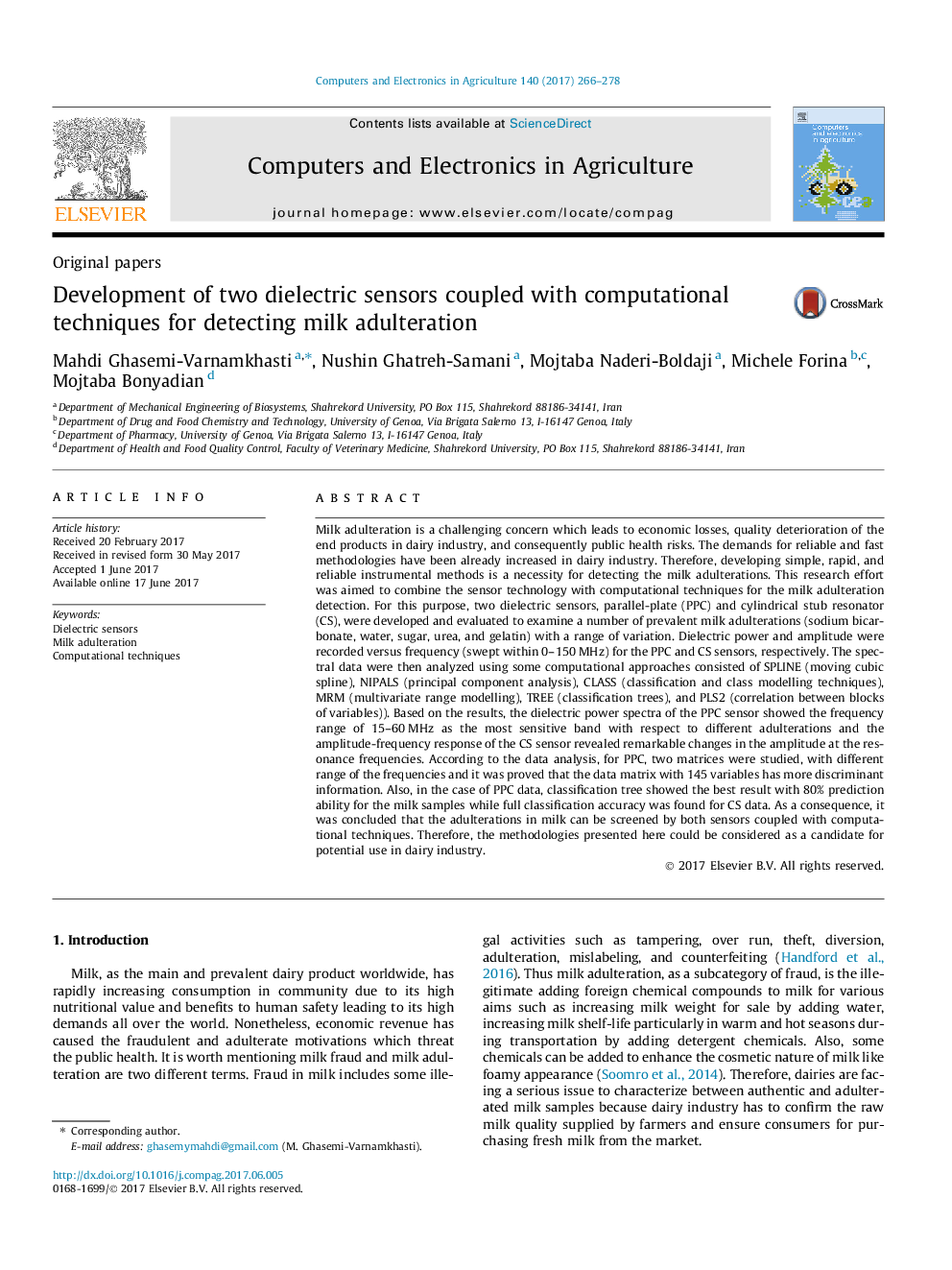| کد مقاله | کد نشریه | سال انتشار | مقاله انگلیسی | نسخه تمام متن |
|---|---|---|---|---|
| 6458602 | 1421108 | 2017 | 13 صفحه PDF | دانلود رایگان |
- Two dielectric sensors were designed and developed to detect adulterations.
- A parallel-plate capacitor was constructed with dimensions of 50 â 50 mm and 25 mm gap between the plates.
- The capacitor was connected to a sweeper function generator with a frequency range of 0-150Â MHz.
- Cylindrical sensor consists of a 250Â mm long stainless steel cylinder (25Â mm i.d.) as the ground electrode of the capacitor and a 2Â mm thick central (positive) electrode.
- The modules of PARVUS were used in this study.
- Screening ability of both sensors showed the satisfactory achievements to be used in milk adulteration detection.
Milk adulteration is a challenging concern which leads to economic losses, quality deterioration of the end products in dairy industry, and consequently public health risks. The demands for reliable and fast methodologies have been already increased in dairy industry. Therefore, developing simple, rapid, and reliable instrumental methods is a necessity for detecting the milk adulterations. This research effort was aimed to combine the sensor technology with computational techniques for the milk adulteration detection. For this purpose, two dielectric sensors, parallel-plate (PPC) and cylindrical stub resonator (CS), were developed and evaluated to examine a number of prevalent milk adulterations (sodium bicarbonate, water, sugar, urea, and gelatin) with a range of variation. Dielectric power and amplitude were recorded versus frequency (swept within 0-150Â MHz) for the PPC and CS sensors, respectively. The spectral data were then analyzed using some computational approaches consisted of SPLINE (moving cubic spline), NIPALS (principal component analysis), CLASS (classification and class modelling techniques), MRM (multivariate range modelling), TREE (classification trees), and PLS2 (correlation between blocks of variables)). Based on the results, the dielectric power spectra of the PPC sensor showed the frequency range of 15-60Â MHz as the most sensitive band with respect to different adulterations and the amplitude-frequency response of the CS sensor revealed remarkable changes in the amplitude at the resonance frequencies. According to the data analysis, for PPC, two matrices were studied, with different range of the frequencies and it was proved that the data matrix with 145 variables has more discriminant information. Also, in the case of PPC data, classification tree showed the best result with 80% prediction ability for the milk samples while full classification accuracy was found for CS data. As a consequence, it was concluded that the adulterations in milk can be screened by both sensors coupled with computational techniques. Therefore, the methodologies presented here could be considered as a candidate for potential use in dairy industry.
Journal: Computers and Electronics in Agriculture - Volume 140, August 2017, Pages 266-278
